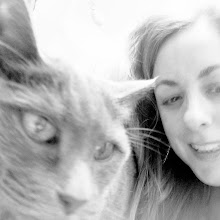 Style and Formula
Style and FormulaChris
Cotton,
The Big
Sea,
Little
Fish,
Large
Pond Publishing [9/2/08]
Chris Cotton's blues repast includes a healthy serving of
folk and country, recalling Taj Mahal and other front-porch
stylists. As is often the case with this kind of music, the spot-
light shines brightest on the main player's voice and guitar.
Eight other musicians, including his regular sidemen—
Vance Ehlers (upright bass) and Justin Markovits (per-
cussion)—pitch in, but Cotton owns this particular show.
For fans of Mahal, John Lee Hooker, Creedence Clearwat-
er Revival, George Thorogood, and other acts that boogie
and choogle, The Big Sea will go down easy. While Cot-
ton may not trump those artists, he doesn't sound like a
carbon copy either. Note, for instance, the addition of sit-
ar to "The Last Man." Raga in the Delta? Sure, why not.
Cotton makes the unique combination work just fine.
John Eichleay, John Eichleay,
Copper Beech Records [10/7/08]
 Based in NYC rather than
Based in NYC rather thanthe UK, former jazz guitar-
ist John Eichleay sings
like Noel Gallagher, but
you wouldn't mistake him
for a one-man Oasis. There's
no Beatles worship going on here, though this ex-Berk-
lee student produces 10 pleasingly moody pop tunes.
If there are no "Wonderwalls" on Eichleay's self-released debut,
he and his band mates scratch a similar musical itch. The set's
secret weapon: versatile organ player Adam Klipple, who con-
jures up the ghosts of circuses past. As for that jazz training, you
won't find much evidence of it on this disc, and that's okay. Jazz
and pop don't always make for the most pleasant bedfellows.
Oh My God, Fools Want Noise,
Split Red Records [10/14/08]
Babies want their toys / fools want noise.
-- Oh My God, "Fools Want Noise"
Putting a creepy toy monkey on the cover of your
CD is one way to get attention. It's also a way to creep
people out. The cymbal-clapping chimp also figures in
the fold-out booklet, in which the goggle-eyed one drinks,
smokes, and hangs out with this Chicago-based band.
What any of this has to do with Oh My God's post-hard-
core quirk-rock, I couldn't say. On their fifth full-length,
the enthusiastic four-piece, who previously recorded as
a trio, add crunchy guitar to their synthy metallic sound.
Given the choice: I'd take the monkey over the music.
Prodigy, H.N.I.C., Part 2, AAO Music
You chinchilla soft / I'm brillo pad coarse.
-- Prodigy, "The Life"
You know the formula: booming bass, jazz-funk organ samp-
les, and lyrics about money, the law, and the ladies. Sprinkle
with profanity and liberal use of the n-word, and you're good
to go: West Coast rap in the NWA/Dr. Dre/Snoop Dogg mode.
I can appreciate all those cats, especially Snoop, but second-
generation gangsta doesn't do it for me. Mobb Deep's Prodigy
does what he does well, but he isn't bringing anything new to
the party. If anything, this genre is starting to sound...tired.
Secret Dakota Ring, Cantarell,
Serious Busines Records [10/28/08]
When a band adds strings to their sound, it usually results in
something stately or sorrowful, but Andy Ross's Secret Dak-
ota Ring keeps things light as the string section saws away.
 In that sense, he recalls Kanye
In that sense, he recalls KanyeWest and Wax Tailor in the live
context, since both prove that
strings don't have to suck the
air out of the room—in fact,
they'd suffer without 'em.
As it turns out, Ross doubles as the guitarist for OK Go and
co-founder of Serious Business Records, and Cantarell fol-
lows-up SDR's 2004 CD, Do Not Leave Baggage All the Way.
Though only two songs take advantage of that fabulous
string section, Ross insures that they're used well. If the
other tracks are less notable, they still get the job done.
The Swear, Hotel Rooms and
Heart Attacks, self-released [8/26/08]
Platinum blonde belter Elizabeth Elkins of the Swear
calls to mind female front women of the hair-metal era,
like Pat Benatar and Lita Ford, while her Atlanta quar-
tet straddles the line between alt-rock and metal.
 In their publicity photo,
In their publicity photo,drummer Jerod Snider
sports a New York Dolls
t-shirt and bass player
Kevin Williams wears
eyeliner, which seems
telling, since the group
mixes and matches genres.
In their press kit, for instance, Creative Loafing compares Elkins to Patti Smith and Chrissie Hynde, indicating they see her through a punk lens. I hear more hard rock, while their biography cites Garbage, Joan Jett, Morrissey, Social Distortion, and Billy Joel.
Of course, alt-metal is a well established subgenre, so it isn't as if
the Swear are dishing up something startlingly fresh, but it's still
mostly a boy's club, which sets them apart a little. Folks feeling
nostalgic for Girlschool and the like should give them a shot.
Endnote: For more information about Chris Cotton,
please click here or here; for John Eichleay, here or
here; for Oh My God, here or here; for Secret Dako-
ta Ring, here; and for the Swear, here or here. Imag-
es from John Sadlier Brown and Planetary Group.















 Still playing
Still playing